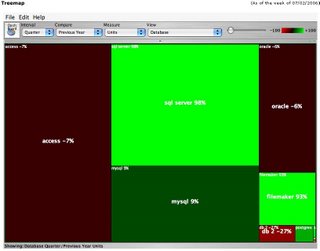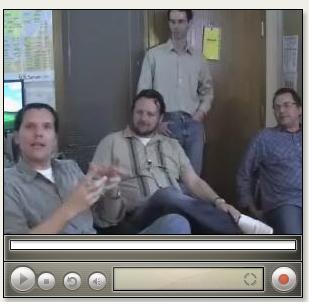Sometimes you inherit a table/database and you need to check if any of the rows in the table have columns with null values
I will show you a great timesaver to accomplish this task
First let's create the table
CREATE TABLE TestNulls (c1
INT,c2
INT, c3
INT,c4
INT,c5
INT, c6
INT)
INSERT TestNulls
VALUES (1,1,1,1,1,1)
INSERT TestNulls
VALUES (1,1,1,1,1,1)
INSERT TestNulls
VALUES (1,1,1,1,1,1)
INSERT TestNulls
VALUES (1,NULL,1,1,1,1)
INSERT TestNulls
VALUES (1,1,1,1,1,1)
INSERT TestNulls
VALUES (1,1,1,1,1,1)
INSERT TestNulls
VALUES (1,1,1,NULL,1,1)
One way to check is to write an OR for every column
SELECT *
FROM TestNulls
WHERE C1
IS NULL
OR C2
IS NULL
OR C3
IS NULL
OR C4
IS NULL
OR C5
IS NULL
OR C6
IS NULL
A better (faster) way is to do it like this
SELECT *
FROM TestNulls
WHERE C1+C2+C3+C4+C5+C6 IS NULL
What if you have 50 columns, who wants to write them all out? Well not me.
No problem in Query Analyzer hit F8, this will bring up the Object Browser
In SQL Server Managment Studio use the Object Explorer
Navigate to the table click on the + and drag the whole column folder into the query window
You will see something like this c1, c2, c3, c4, c5, c6
Copy that open up notepad and paste it into notepad. Hit CTRL + H and in the Find box type a , and in the Replace box type a +, hit OK. After that do a CTRL + A and CTRL + C
Paste it back into Query Analyzer/SQL Server Managment Studio and you are done with that part
This will work everytime if all the columns are integers, what if you have varchars?
Let's test that out
CREATE TABLE TestNullsChar (c1
CHAR(1),c2
CHAR(1), c3
CHAR(1),c4
CHAR(1),c5
CHAR(1), c6
CHAR(1))
INSERT TestNullsChar
VALUES (1,1,1,1,1,1)
INSERT TestNullsChar
VALUES (1,1,1,1,1,1)
INSERT TestNullsChar
VALUES (1,1,1,1,1,1)
INSERT TestNullsChar
VALUES (1,NULL,1,1,1,1)
INSERT TestNullsChar
VALUES (1,1,1,1,1,1)
INSERT TestNullsChar
VALUES (1,1,1,1,1,1)
INSERT TestNullsChar
VALUES (1,1,1,NULL,1,1)
No problem here (depending on your CONCAT_NULL_YIELDS_NULL setting)
SELECT *,C1+C2+C3+C4+C5+C6
FROM TestNullsChar
WHERE C1+C2+C3+C4+C5+C6
IS NULL
Let's set our CONCAT_NULL_YIELDS_NULL setting to off
SET CONCAT_NULL_YIELDS_NULL OFFRun the query again
SELECT *,C1+C2+C3+C4+C5+C6
FROM TestNullsChar
WHERE C1+C2+C3+C4+C5+C6
IS NULL
As you can see nothing was returned so make sure that CONCAT_NULL_YIELDS_NULL is set to on before executing such a query because NULL + any other value will return NULL if CONCAT_NULL_YIELDS_NULL is set to on
SET CONCAT_NULL_YIELDS_NULL ON
 Quest has a nice little give away. They are giving away 40 2GB Apple Nano iPods to people who are willing to try LiteSpeed for SQL Server.
Quest has a nice little give away. They are giving away 40 2GB Apple Nano iPods to people who are willing to try LiteSpeed for SQL Server. 





